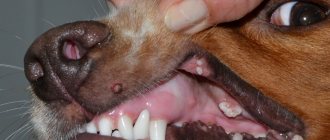Rabbits are not very strong animals. Sometimes farmers' entire livestock perishes and their business collapses. When a rabbit that was a pet dies, its owners also experience this event painfully. Many problems can be avoided and the lives of pets can be saved. To do this, you need to know what can threaten the eared animals and how you can help them.
What do rabbits die from?
There are many reasons why animals die. Even good veterinarians cannot always determine exactly what caused death. It is enough for a rabbit breeder to know the main dangers. The biggest fear is infection.
Rabies
Some diseases lead to mass death in a short time. These include rabies. Fortunately for farmers and animals, it is rarely found among rabbits. Otherwise, rabies is as dangerous as VGBV or myxomatosis.
The disease is caused by a virus. It is usually transmitted after the bites of sick animals. Signs of rabies include:
- refusal of the animal from water;
- copious amounts of saliva;
- strange or unusual behavior.
Sick rabbits die within a week at most. The vaccination that was given before infection saves.
In Russia, such a vaccine is not considered mandatory. As a rule, decorative rabbits are vaccinated, especially if they have to travel by train or plane.
Viral hemorrhagic disease
VGBK is considered one of the most dangerous and common problems. Stands for "rabbit viral hemorrhagic disease."
The incubation period is about three days. From this time on, symptoms appear:
- rabbits don't eat;
- convulsions;
- weakness, lethargy;
- pain, moaning;
- blood from the nose;
- high body temperature.
These are external, noticeable signs. Hemorrhages appear inside the body - hemorrhages affecting the liver and lungs. After a few days the animals die.
Rabbits are more often infected with VGBV through the feces of their relatives. There are other ways - the disease is transmitted through litter and soil, from birds, rodents, and insects.
Myxomatosis
There is one more virus that rabbit breeders should always remember. It is the causative agent of myxomatosis. The disease is considered, together with VGBV, the most dangerous for rabbits. As a rule, 70–100% of the population dies.
Transmitted in several ways:
- through insect bites - mosquitoes, fleas;
- airborne.
Main symptoms:
- tumor nodes, swelling;
- purulent conjunctivitis;
- weakness, apathy;
- temperature increase.
Myxomatosis is a human invention. The virus was developed in France to kill wild rabbits.
Bacterial diseases
Other pathogens also pose a danger. Many diseases, which also kill rabbits en masse, develop as a result of bacterial infection.
Pasteurellosis
One of these diseases is caused by the bacteria Pasteurella cuniculi. Pasteurellosis also affects pigs, dogs, chickens, and other domestic and wild animals. The risk of infection in rabbits is high. People often become carriers or even get sick.
The mortality rate on a rabbit farm when infected with pasteurellosis is high: 15–75% of the livestock dies, sometimes more. Animals suffer from internal hemorrhages. There are three forms of the disease with their own characteristics.
Common signs of pasteurellosis include:
- refusal to eat;
- weakness, lethargy;
- diarrhea, bloating;
- difficulty breathing, sometimes wheezing is noticeable;
- rhinitis, sneezing, runny nose;
- high body temperature;
- pneumonia;
- inflammation of the eyelids, nose, eye membranes, often with pus;
- sometimes abscesses.
The disease is transmitted like this:
- upon contact, not only rabbits are infected, but also other animals and humans;
- through the digestive organs - with water, food, through bedding, equipment;
- by airborne droplets.
There are especially many microbes in urine, feces, and nasal discharge. For sick but surviving rabbits, pasteurellosis is no longer a problem.
Tularemia
Another dangerous type of bacteria is Francisella tularensis, which causes tularemia. Affects 125 species of animals. Rabbits often get this microbe:
- From rodents, such as mice.
- From blood-sucking insects. Within the herd, the main cause is lice infestation.
- Through water, grass, where infected animals have been. In nature, outbreaks are active for up to 50 years, sometimes more.
The infection is transmitted to people. Although rabbits rarely suffer from tularemia. As a rule, this happens in spring or summer. The disease is recognized by the following signs:
- heat;
- noticeable exhaustion, thinness;
- enlarged lymph nodes under the jaw, in the groin, neck, under the armpits;
- rhinitis;
- purulent foci.
In some cases, the symptoms are invisible, so the cause of death is unclear. Within 5–30 days, most infected individuals die.
Coccidiosis
Not only viruses and bacteria harm rabbits, but also protozoan parasites, for example, Coccidiasina. It is believed that every animal has them, but clinical manifestations are rare.
Coccidia affect the intestines and liver. The disease is recognized by the following signs:
- swollen abdomen;
- thin body;
- lack of appetite;
- jaundice;
- feces with blood.
Coccidia live in dirty water, bad, spoiled food, and feces. It is also transmitted by other animals or humans. Incubation is three days.
Rabbits with normal immunity are not susceptible to these parasites. The rest get sick and die. Coccidia parasitize in the liver for about 2 months, in the intestines for 10 days. Then the animal runs out of resources. The majority of sick rabbits - 70% - die.
In the dissected animals, the liver was enlarged 5 times. Growths and light-colored nodules are observed in the intestines.
Other reasons
Rabbits also die due to other diseases and disorders. The main problems include:
- Scabies. They are caused by small - up to 1 mm - mites. Depending on their type, notoedrosis, sarcoptosis, and psoroptosis are distinguished. Scabies is transmitted through equipment and bedding. Carriers are not only rabbits, but also other animals, such as cats and dogs. The main symptom is itchy and itchy skin. With any type of neglected scabies, animals die.
- Mastitis in females. Appears during lactation (feeding) on the nipples. The disease begins with wounds from the teeth of the cubs. Unsanitary conditions introduce germs there. The immune system, weakened by stress, cannot resist pathogens: the blood becomes infected, and the rabbits die.
- Flatulence - bloating. Often appears due to sudden changes in diet. The animal refuses food and loses weight. Due to pain and colic, the animals behave strangely. Fermentation appears in the intestines due to undigested food. This is an excellent environment for harmful microorganisms. As a result, the rabbits die.
- Heat stroke due to heat or poor ventilation in cages or rooms. Animals breathe hard and lie down a lot. They will die if conditions are not improved. Ventilation and bottles of cold water in cages help.
- Freezing. This is a consequence of mistakes in preparing for cold weather.
- Poor nutrition , lack of vitamins and other substances. The animal does not look good: it grows poorly, the hair falls out, the gums bleed, the eyes water, and fester. Rabbits don't die right away. Gradually, the body weakens and immunity declines. This is the right time for infections and other problems.
- Neglected worms.
- Other, more rare diseases.
- Injuries.
Sometimes rabbits are killed by predatory animals. For rabbits, for example, rats are dangerous.
Other reasons due to which livestock die
Livestock mortality is also possible due to:
- flatulence;
- freezing;
- heat stroke;
- bad food;
- lack of vitamins;
- scabies mite;
- mastitis.
For these reasons, one or more rabbits die. Sometimes rabbits die for no reason. This is a sign that the conditions for keeping animals need to be reconsidered.
Bloating (flatulence)
This dysfunction is the result of improper introduction of complementary foods or a sudden change in food. Do everything gradually, do not give new food in large quantities.
Symptoms of flatulence:
- refusal to eat;
- weight loss;
- strange behavior of the rabbit (this is a consequence of colic).
Food is not digested and causes fermentation in the intestines. Pathogenic microorganisms develop that have a negative effect on the organ. The result is death.
Heat stroke or freezing
In summer, rabbits can die from extreme heat . If the room where the cages are located is not ventilated, this leads to heat stroke.
The animal begins to breathe heavily and lies down for a large amount of time. If the temperature is not normalized and the room is not ventilated, the rabbits will die.
In winter, when it is frosty and cold, the room must be heated, especially if rabbits are born. If a female rabbit has picked up little fluff, then it is advisable for a rabbit breeder to do this, otherwise the offspring will die out instantly.
Improper feeding, lack of vitamins and other reasons
Due to an inadequate diet, vitamin deficiency may develop. Vitamin deficiency leads to hair loss, inhibition of growth and development of young animals, bleeding in the gums, eye problems, etc. The daily diet should be rich.
If a rabbit has a scabies mite parasitizing its ears for a long time, it eats into the skin and drinks blood. Without treatment, the individual weakens, does not eat and dies.
Another problem is mastitis. Rabbits suffer from it. Small wounds that form after feeding can become infected, which can be fatal.
Causes of death of little rabbits
The mother's milk supports the immunity of the cubs. After weaning, it does not last long. The small body is still weak, so the rabbits often die.
Infectious diseases
Cubs and young animals are one of the most vulnerable groups of animals. Any, even adult and strong, rabbits are afraid of germs and infections. This is perhaps the most common cause of death. For small rabbits the threat increases.
Staphylococcus
Juveniles sometimes suffer from infection with purulent foci and blood poisoning. This is staphylococcosis, which also kills many animals. The disease affects not only rabbits, but also other animals and humans.
Juveniles are most often infected by relatives. Pathogens are found in nasal secretions, urine, feces, and pus. They often enter through damaged skin and mucous membranes. Infection can also be airborne.
Rabbits are more susceptible to staphylococci. The disease often appears on farms just after birth. The disease is provoked by unsanitary conditions, overcrowding, and improper care. Staphylococci can accumulate on the farm.
Stomatitis
Young animals often suffer from biting midge. This is also called stomatitis. The disease is caused by a virus. It is inherited from parents or through the oral mucosa.
More often than other rabbits, nursing cubs or those that have already been separated from their mother suffer from stomatitis. Symptoms appear 2–3 days after infection:
- tongue becomes inflamed;
- a lot of drool;
- white plaque, film, ulcers with pus in the mouth;
- wet face;
- the hair in the area of the head, belly, and paws is glued together;
- weakness, loss of appetite;
- diarrhea;
- Due to itching in the mouth, the animal constantly chews.
There is a mild form of stomatitis with subtle symptoms. The disease goes away on its own within 1–2 days. In the acute form, without treatment, the baby rabbit will die in 4–5 days.
Temperature drop
Cubs require special conditions. The body does not yet know how to properly regulate its own temperature and maintain heat. As a result, baby rabbits sometimes freeze even in summer.
Cooling is always aggravated by dampness. The role of the heating pad is performed by the female. The queen cell should contain dry, warm bedding and rabbit fluff. The design of the nest is also important. Otherwise, small rabbits die due to hypothermia.
Poor nutrition
Sometimes offspring die due to diet. This happens if the rabbit has died, and the farmer does the feeding on his own. Mother's milk supports the immunity of the babies. Artificial substitutes are inferior in this regard. As a result, the rabbits lack the necessary substances. They weaken and die.
Cubs can also die in the event of a lack of food, when females have little milk.
Carefully! Infection!
Rabbits often suffer from infectious diseases due to the body’s low resistance to such ailments. Rapid spread of the disease and mass mortality can occur when several animals are affected by the active virus at once. In order to quickly identify sick rabbits, you need to know the description of the symptoms and, if they appear, immediately call a veterinarian and quarantine the rodent with poor health.
Manifestation of stomatitis
You can get acquainted with the main viral infections and their manifestations in the following table.
Table No. 1
| Name | Symptoms | Transfer method | Treatment | Note |
| VGBK (fever) | There may be no symptoms. Acute course is determined by refusal of feed, weight loss, restless behavior, immobility, seizures | Airborne, feces, meat products, wool | Absent | If infected, the probability of livestock mortality is 90%. It is necessary to vaccinate: the first time every 1.5 years. Adults are vaccinated once every six months |
| Myxomatosis | At the first stage of the disease there are no symptoms. Subsequently, bulges appear on the body and face of the animals, a purulent crust appears on the eyes, refusal to feed; passive, lethargic behavior | Airborne, blood-sucking insects | Treatment is possible at an early stage | Livestock mortality in 95% of cases of infection, death occurs after 7 days, maximum - 14. A vaccine is used to prevent infection |
| Pasteurellosis | Loss of appetite, sneezing, cough, difficulty breathing, fever, apathy, purulent discharge from the mouth, vomiting, indigestion | The causative agent is a viral organism. Spreads through the air, through feed, water and dirt on the hands of service personnel | Use of antibiotics and sulfonamides as prescribed by a veterinarian | At an advanced stage, animals do not survive. In all other cases, treatment gives a favorable outcome. Vaccination of young animals from 30 days of age. Adults are vaccinated twice a year |
| Coccidiosis | Lack of appetite, weight loss, bloating | The spreader is coccidia, which harms the intestinal cavity and liver. Adults become infected from low-quality food, contaminated water, and feces. Suckling young animals - through mother's milk | Antibacterial drugs, compliance with hygienic requirements in the rabbitry, quality diet | The disease is especially dangerous for young animals. It is necessary to promptly disinfect the place where animals are kept, feeders, and equipment. The corpses of animals diagnosed with coccidiosis must be disposed of by burning |
| Stomatitis | Redness of the mucous membrane, increased salivation, the presence of white films on the lips and edge of the tongue, swelling of the tongue, loss of appetite, weight loss, immobility, diarrhea | The causative agent is a filterable virus. Spreads through the mucous membranes of the mouth, can be inherited | Rinsing with a 15% manganese solution, penicillin ointment, copper sulfate, baytril, biomycin. All these drugs and their exact use are prescribed by a veterinarian. | The neglected form leads to case |
| Cysticercosis | Liver damage, peritonitis | Caused by cestode larvae | No treatment | Diagnosis is made by introducing the allergen subcutaneously. If the diagnosis is confirmed, the corpse must be destroyed by burning |
| Tularemia | Similar to staphlococcosis | Carriers are mice, rats, blood-sucking insects | No treatment | Detected by bacteriological tests. Isolation of animals is mandatory if there is the slightest suspicion of illness. Skin and meat products from sick animals must be disposed of |
| Listeriosis | Changes are noticeable after opening the animal | Spread by lice, fleas, ticks | It is advisable to treat single queens, breeders, and young animals. Mature rabbits must be destroyed. It is worth noting that even a recovered animal poses a serious danger to its fellows and humans. |
Why do decorative rabbits die?
Pets die for the same reasons as their relatives on farms. Features are only in the lifestyle. For example, cells tend to be cleaner, which helps ward off infections.
Many purebred animals with an exotic appearance often have weaker immunity than their ordinary-looking relatives. There are other problems and diseases caused by selection or genetics.
Sometimes ornamental animals die for no apparent reason. Some diseases appear almost unnoticeably, such as tularemia. In other cases, the owner does not notice the symptoms.
Decorative rabbits live longer. Sometimes they die from ordinary old age. An elderly animal needs special care, more care, and suitable nutrition.
Decorative rabbits live a maximum of 15 years. Signs of old age include:
- bad wool;
- passivity, refusal to play;
- thinness, sunken stomach;
- decreased appetite, increased sleep time;
- cloudy eyes.
Non-infectious diseases of rabbits
In addition to viral diseases, the life and health of rabbits can also be threatened by non-infectious diseases. As a rule, they do not cause mass mortality, but the death of even one head causes a lot of trouble for the rabbit breeder. The most common ailments:
- Flatulence. It occurs due to an excess of succulent feed, wet grass and the presence of mold in it. The rabbit loses its appetite, the mucous membranes turn blue, and rapid breathing is observed.
- Avitaminosis. Develops with unbalanced food and vitamin deficiency. Observed: hair loss on the back, bleeding gums, dry eyes, growth retardation.
- A rabbit can get heatstroke if the rabbitry is not ventilated and the temperature in it is higher than the required level. The animal becomes lethargic, constantly lies and breathes heavily.
- Trauma. Scratches, abrasions, bruises, and finally, broken limbs - all this is the result of overcrowding of cells, the presence of traumatic equipment in them - feeders or drinking bowls with sharp corners.
- Parasites. Most often, ear mites cause discomfort to the animal. Their presence is indicated by itching and redness of the ears. The rabbit begins to lose hair, loses weight, and develops general weakness and exhaustion
- Mastitis. If the cage where the nursing rabbit is kept is constantly damp and not cleaned, then microbes enter the body through microcracks in the nipples, which can lead to inflammatory processes in the body of varying severity.
Death at birth
Sometimes immediately after birth they discover that the cubs have died. Death at birth and miscarriages occur for the following reasons:
- Severe stress. These are not only conditions, sounds, smells, but also careless handling and inspection.
- Poor nutrition. Rabbits lack the necessary substances for development and life. As a rule, these are vitamins A, D, E, proteins, iron. Constant access to water is especially important for rabbits.
- Infections. For example, listeriosis causes miscarriage. The acute form causes the baby rabbits to die at birth.
- Unsuitable temperature (too cold, too hot) or sudden change. Frostbite leads to illness and death. When it’s hot, the female’s body is dehydrated, resulting in little or no milk production.
If not maintained properly, embryos “resolve” when they are not yet a month old. Typically this occurs between the 12th and 20th day of pregnancy.
Treatment and prevention of diseases at home
Curing VGBK and myxomatosis still remains a problem. If even one individual in a rabbitry gets sick, almost all the animals will die out as a result.
The only means that can protect livestock is vaccination. It is done annually two to four times a year.
The only means that can protect livestock is vaccination.
Coccidiosis and pasteurellosis also sometimes lead to mortality, but if you contact your veterinarian in time, this can be avoided. Pathologies are treated with antibiotics.
Tips for beginner rabbit breeders:
- Always maintain hygienic conditions in the rabbit shed. It should be clean and dry there.
- Excessive crowding of rabbits in a cage has a negative effect. Create space and comfort for everyone.
- Animals need to be fed in a quality and balanced manner. Do not give spoiled food or food that you doubt. If you feed rabbits food that they should not eat, you can poison the animals, which can also lead to death.
- If an individual cannot be cured and it is risky to keep it alive, it should be killed and disposed of.
- Never eat meat from a sick animal.
- Treat cells with a disinfectant solution. Healthy animals cannot be housed without treatment.
How to avoid premature death of a rabbit
Often the lives of animals can be saved. Many problems can be treated, even if the symptoms look serious. In other cases, nothing can be done or it is too late.
Treatment depends on the specific disease. It is determined by a veterinarian. To avoid the death of rabbits, they contact the veterinarian in a timely manner and conscientiously follow the recommendations.
How to tell if a rabbit is dead
We know it can be very difficult in the last stages of life, but it is important to stay with your rabbit if you can, you can help greatly by conveying a sense of calm, comfort and safety. If you have to see a dead rabbit, it can be traumatic. However, your partner will be very grateful for your love and company in your last moments...
When staying with your dying rabbit, do not make sudden movements, avoid loud music, or make loud noises. You should not manipulate them in excess. Just stay with them and proceed as smoothly as possible. If you're just not ready to handle your rabbit's death, don't be ashamed. You can ask a family member or friend to help you or take your place.
When your rabbit is dying , you may see that your breathing is disturbed, you may worry and make nervous movements. Your pulse will slow down and may begin to quiver or even become stiff. Some people may wonder why their rabbit died stretched out, but this is common in rabbits. They may lie on their side and stretch out as they begin to lose their life. It may seem painful, but it is the end and your suffering will soon end.
If we want to confirm that we have a dead rabbit, we must confirm the absence of vital signs :
- The rabbit is not breathing and stops moving..
- No pulse.
- Releasing your sphincters (defecation).
- No response time in your hair.
What to do if pestilence of young animals begins
Sometimes the animals die one after another. In this case, do not panic and quickly do the following:
- Patients are isolated. They are transplanted into other cages and into a separate room.
- Find out the cause of the pestilence. They invite a veterinarian and give him a carcass for examination.
- If there is a chance, treatment is started quickly and correctly. In other cases, sick rabbits and carcasses are destroyed.
- Surviving individuals are quarantined. They are monitored carefully and constantly.
- Cells, premises, equipment are treated and disinfected.
- Better conditions are created for rabbits if there were any shortcomings.
When done correctly, the situation often improves. In other cases, all that remains is not to repeat mistakes in the future.
Causes of death of ornamental pets
Decorative rabbits can suffer from the same diseases as regular animals kept outdoors. Consequently, the reasons that can lead to the death of individuals are the same.
The moment of old age occurs when the rabbit has lived for 6–10 years. Until this moment, he should be cheerful, cheerful and playful. The possible death of a pet due to old age can be recognized by a number of signs:
- weakened movement, reluctance to play;
- change in character;
- sagging abdomen;
- clouding of the lenses of the eyes;
- hair loss;
- the presence of diseases characteristic of old animals.
If these symptoms appear, you need to be even more careful and attentive to your pet.
Lack of attention can also cause the death of decorative rabbits. Since they strive for games, fun, communication with the owner, loneliness is alien to them. If your rabbit is constantly alone, he may become depressed.
This passive state is expressed by a lack of appetite, refusal to move and leave the cell, which subsequently leads to death. You can protect your rabbit from this if you pay more attention to it or get a second decorative rabbit.
Prevention measures
To prevent illnesses and problems, do the following:
- They remove waste and leftover food in a timely manner and change the water. A mesh floor helps to collect waste.
- Disinfection is carried out regularly.
- Organize and maintain good ventilation.
- Rabbits are examined: small ones - daily, adults - at least once every half month.
- Vaccinations are given when the juveniles are approximately 45–60 days old. Immunity does not appear immediately. The vaccination is repeated every year. Vaccinations are a reliable and sometimes the only way to protect, for example, with VGBV.
- Make sure that there is no dampness in the rabbitry.
- They fight the cold and heat in the cages.
- Avoid stress or reduce it to a minimum.
- Pay attention to feed. Products must be fresh, with a set of necessary substances, in normal volumes. There should always be enough water, especially for pregnant, lactating, weakened and elderly animals.
- Remove parasites: mice, rats and insects.
- Isolate sick individuals.
- For prevention, even healthy-looking rabbits are treated.
- The carcasses of dead individuals are destroyed, and cages, equipment, and premises are disinfected after them.
- They keep order. Fights and injuries are not allowed.
- Protects from other animals.
- Spacious cages and regular walks are provided.
- They keep the livestock in warm rabbitries and fight against drafts.
- Only suitable animals are allowed to breed. Some diseases are passed on to offspring.
When rabbits die, it's a serious blow to business. Owners of decorative pets have no easier time. It is important to quickly identify and eliminate the cause.
Causes of mortality in young animals
Mortality can occur not only among adult livestock, but also among young animals. In the latter, a weak immune system and the health of the rabbit play a big role. Individuals who have suffered from infectious diseases should not be allowed to breed, because Animals can remain carriers after recovery. This is how rabbits become infected when they receive mother's milk. All prophylaxis and vaccination are carried out before the start of the breeding period.
It is necessary to remember to create special conditions for young animals. The cells and uterine compartment must be kept clean, because... Many viruses spread in contaminated environments.
Farm staff must also maintain personal hygiene.











